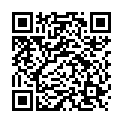|
|
|
| Module code: E906 |
|
2V+2U (4 hours per week) |
|
5 |
| Semester: 9 |
| Mandatory course: no |
Language of instruction:
German |
Assessment:
Project
[updated 30.07.2021]
|
E906 Electrical Engineering, Master, ASPO 01.10.2005
, semester 9, optional course
|
60 class hours (= 45 clock hours) over a 15-week period.
The total student study time is 150 hours (equivalent to 5 ECTS credits).
There are therefore 105 hours available for class preparation and follow-up work and exam preparation.
|
Recommended prerequisites (modules):
E805 Controlling Electrical Drive Systems
[updated 09.01.2010]
|
Recommended as prerequisite for:
|
Module coordinator:
Prof. Dr.-Ing. Stefan Winternheimer |
Lecturer:
Prof. Dr.-Ing. Stefan Winternheimer
[updated 09.01.2010]
|
Learning outcomes:
After successfully completing this course, students will be able to select and dimension a drive that is optimally suited to a problem. Application examples can be processed up to a complete quotation using project planning tools.
[updated 30.07.2021]
|
Module content:
1. Overview of variable-speed drives:
asynchronous motors, inverters, other variable-speed drives
2. Fluid flow machines:
Basics: Saving energy, start-up time on the mains / on the inverter, braking and stopping possibilities, braking time; application examples compressor and fan
3. Constant torque drives:
Basics: Conveyor technology, elevators, hoist and travel drives, 4-Q drive;
Applications
4. Positioning and pulse drives:
Basics: pulse drives, servo motors and inverters; Applications
5. Mechanical problems in drives
Dual-mass transducer with elastic connection, loose
6. Plant design
Planning tools: Pfad, Sikostart, SIDIM
[updated 30.07.2021]
|
Teaching methods/Media:
Lecture notes, CD „Siemens A&D Projektierungshilfe“, PC, video projector
[updated 30.07.2021]
|
Recommended or required reading:
[still undocumented]
|


